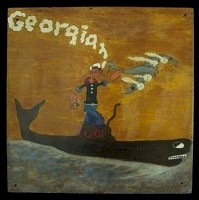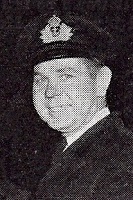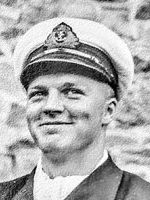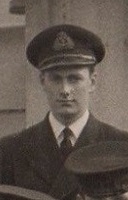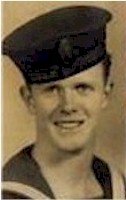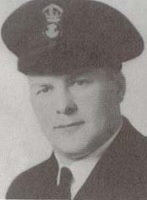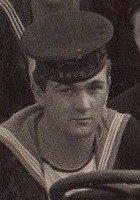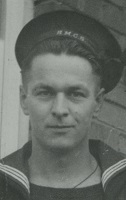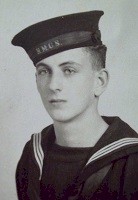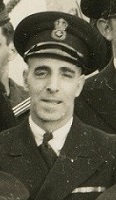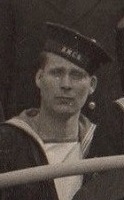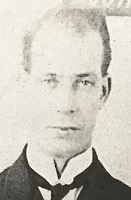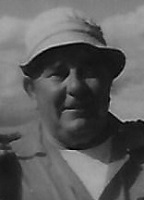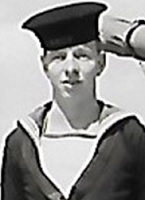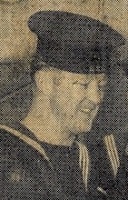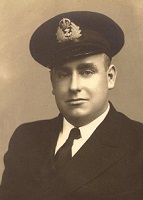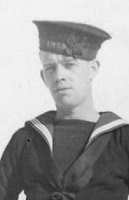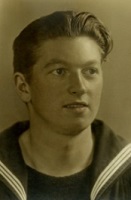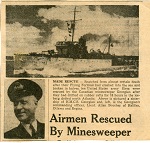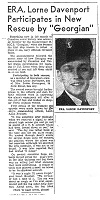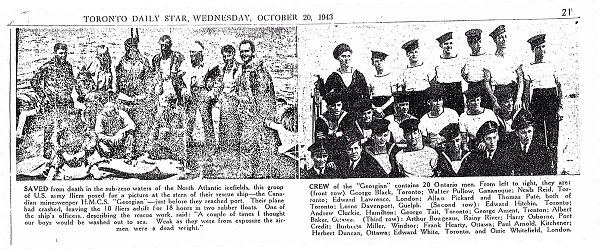|
HMCS GEORGIAN J144
Bangor Class Minesweeper
Commissioned at Toronto on 23 Sep 1941, GEORGIAN arrived at Halifax on 13 Oct 1941. On completing workups she was assigned to Sydney Force, but in Jan 1942, she joined Newfoundland Force and remained with it until Feb 1944.
Through a tragic error on 12 Jun 1942, she rammed and sank the British submarine P.514 off Newfoundland.
"It was just after midnight on 21 Jun 1942. The tragedy took place off Cape Race when the path of the eastbound submarine & her corvette escort, which were heading for St. John's from Argentia, intercepted that of a westbound convoy CL.43 being escorted by the minesweeper. Problems with one of the ships in CL.43 had delayed the start of the convoy & it was several hours behind schedule. At the same time an eastbound convoy, SC.88, which had been blown north of its intended track, intercepted & passed through CL.43. The situation was confusing & dangerous. Visibility was poor & the night sky was overcast with frequent mist patches. GEORGIAN detected approaching diesel engine HE on her hydrophones & turned onto the bearing to investigate. When the lookouts spotted the submarine the helm was immediately put over & she rammed P.514 amidships. According to one testimony, the submarine's navigation lights flicked on, then off. According to the CO of the corvette escorting P.514, her lights had been on for some time. The bridge personnel in GEORGIAN could look down into the bridge of the submarine & they observed that it was empty & the hatch was shut. At 00:40 hours Atlantic Time, the submarine went down in 27 fathoms. There were no survivors. A lone body was spotted in the water at the time but sank before it could be recovered. The body of ERA, N.C. Bennett came ashore near Ferrylands a month later. He was interred in the local graveyard with full military honors. At the enquiry, no blame was attached to anyone concerned. It was NSHQ policy then, & throughout the war, to not inform escort forces of the movements of Allied submarines for fear they would hesitate in attacking U-boats. The only measure of safety offered to Allied submarines passing through an operational area was the establishment of temporary no-attack zones for aircraft, but the submarines were always on their own when it came to both ships & aircraft."
On 10 Jun 1943, HMCS GEORGIAN rescued the crew of a downed USAF B17 Flying Fortress which had crashed at sea. The B-17 that the crew was assigned to "was beset by mechanical difficulties from the outset, causing many three-engine landings, among other problems. After departing Gander Lake, Newfoundland, on June 9, 1943 bound for England, the crew was forced to ditch that aircraft in the Atlantic. All 10 men were rescued the next day and returned to their departure point, Gander Lake, Newfoundland. From there they were flown back to Presque Isle, Maine, where they were fitted out with new uniforms and other necessary equipment. Again they took to the air - as passengers this time - and rejoined the Group in England on 6 July 1943." Most of the crew were eventually shot down on a flying mission over Germany and spent the rest of the war as Prisoners of War." (research by Cheryl Elliott)
Shortly after the rescue of the B17 crew, GEORGIAN went to the air of another aircraft that landed in rough seas after running out of fuel. She became the first and only RCN Minesweeper to fuel an aircraft at sea.
On 13 Sep 1943 GEORGIAN went into refit in Lunenburg, NS. The refit, which was completed on 15 Nov 1943, was conducted by Lunenburg Foundry & Engineering Ltd.
Nominated for duties in connection with the invasion of Europe, she left Halifax on 18 Feb 1944,with Bayfield, Mulgrave and Thunder for Plymouth via the Azores, arriving on 07 Mar 1944. Assigned to a series of minesweeping flotillas, particularly the 14th, she was present on D-Day. She returned to Canada in Jan 1945, for refit at Lunenburg, N.S., then returned to the U.K. for service with the 31st Flotilla in Apr 1945. That fall she sailed again for Canada, where she was paid off at Sydney on 23 Oct 1945 and laid up at Shelburne until sold for scrap.
Photos and Documents Ship's company photos
HMCS GEORGIAN - Transcription of Record of Proceedings Feb-Dec 1944
RCN Memories: Going Ashore, D-Day plus 7
Commanding Officers
Lt, RCN died - 21 Sep 1944
They shall not be forgotten
Former Crew Members
Photos and Documents
(LD04-LD05) Newspaper articles on hometown boy (ERA Lorne Davenport) who was serving in HMCS GEORGIAN for 2 rescues (LD05) Sailors mentioned in article: ERA Lorne Davenport; Signalman Edward Lawrence (of London, ON); AB Ossie Whitfield (of London, ON); Stoker Burdette Miller (of Windsor, ON); Coder Paul Arnold (of Kitchener, ON)
LD07 (LD07) Article on HMCS GEORGIAN'S rescue of the crew of a downed US Flying Fortress The Toronto Daily Star, Wednesday, 20 Oct 1943 Sailors mentioned in the article: George Black (of Toronto, ON); Walter Pullow (of Ganaoque, ON); Neals Reid (of Toronto, ON); Edward Lawrence (of London, ON); Allan Pickard (of Toronto, ON); Thomas Pate (of Toronto,ON); Lorne Davenport (of Guelph, ON); Edward Hitchin (of Toronto, ON); Andrew Cluckie (of Hamilton, ON); George Tait (of Toronto, ON); George Ament (of Trenton, ON); Albert Baker (of Ottawa, ON); Arthur Bougeaus (of Rainy River, ON); Harry Osborne (of Port Credit, ON); Burbeate? (Burdette) Miller (of Windsor, ON); Frank Hearty (of Ottawa, ON); Paul Arnold (of Kitchener, ON); Herbert Duncan (of Ottawa, ON); Edward White (of Toronto, ON); Ossie Whitefield (of London, ON)
From the collection of ERA Lorne Davenport, RCNVR
Courtesy of Dan Davenport
|

